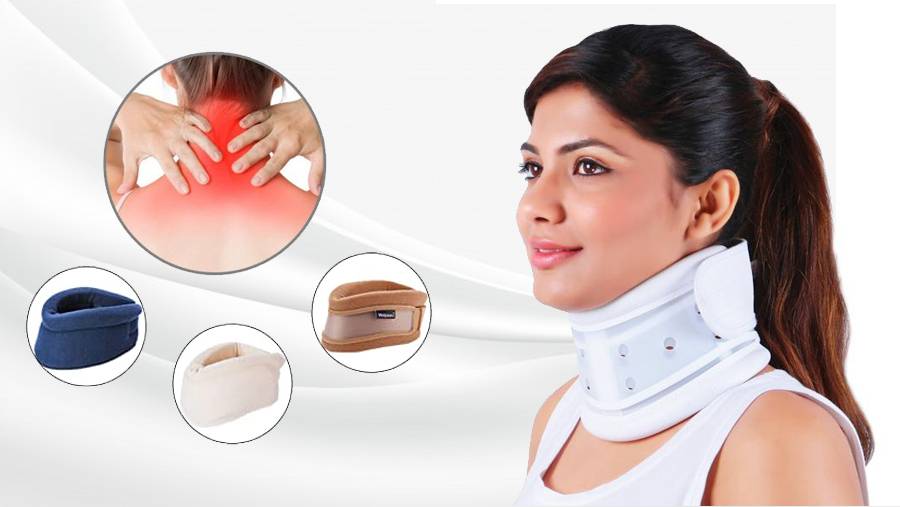
Hello
Select Address

Did you know cervical collars have both hard and soft variants?
The softer cervical collars are not meant for serious neck injuries, whereas, the harder braces are prescribed to patients in need of very limited movement. As far as the material is concerned, soft cervical collars are made up of foam, felt, or rubber. The hard ones are manufactured using Plexiglass or plastic.
Hardness restricts head movement much more sternly than the softer ones. As the head needs to remain in that straight position continuously, the hard braces have a chin rest too. Therefore, you need not worry about strained muscles due to long hours of ‘no-movement’ of the neck!
The soft collars on the other hand are only prescribed to manage slight and moderate neck pain.
Do they give you spinal support too?
The answer is yes, the movement restriction imposed upon the head and neck provides the patient with an adequate amount of spinal support. The different physical conditions that demand cervical support and the use of such braces need an elaborate discussion.
Whiplash injury – Such injuries take place due to the sudden, forceful, swift movements of the neck. The condition can be familiarized with the 'cracking of a whip' and hence the name 'whiplash injury'. They mostly occur due to some sports injuries or a motor vehicle accident. A whiplash injury causes sprain or strain of the cervical region where either the muscles or ligaments get stretched or torn. A soft brace is generally recommended in such a case.
The softer braces are made up of washable and comfortable fabric. The wearer barely finds it difficult to get accustomed to soft cervical support!
Cervical lordosis – Lordosis results from a forward neck position. Technological advancement over the years has caused most jobs to be dependent on electronic gadgets which imposes long hours of leaning forward over digital screens causing postural dysfunction.
Studies have revealed that the weight of the head increases 4 to 5 times as a result of continuously leaning forward, stressing the muscles, bones, and ligaments of the spine. Braces are used to restrict this frontward leaning of the head.
Apart from these, there are other common conditions that require the use of a cervical collar like neck surgery resulting from cancer or an accident, cervical spondylosis (caused due to the wearing of bones and cartilage with the advancement of age), and any general neck pain (mostly caused by stress).
Other things to be considered…
The most obvious obstacles faced when you begin wearing the cervical collar are – how to take a bath and sleep?
Read on to know about the easy solutions…
As for bathing, it's easier to bathe than to take a shower! That way, you reduce the chances of your cervical collar getting wet! Yes, you cannot afford to drench your neck brace. The safest thing to do is wrapping plastic around the collar and using a hand shower to bathe (keeping the nozzle at the minimum).
Cervical collars are generally not advised for long term use. This is done to encourage the neck to accustom itself to a limited range of motion after the recovery period is over. If not, the flexibility of the neck is hampered, and getting back to normal becomes tougher. For best results, the relaxation of the use of your cervical collar would come hand-in-hand with some stretching exercises.
Your goal is not only to give some rest to your neck but also to get back to that normal and hassle-free life!